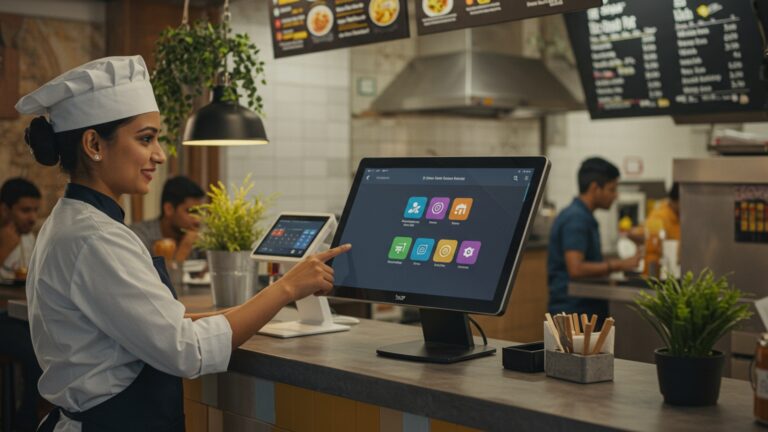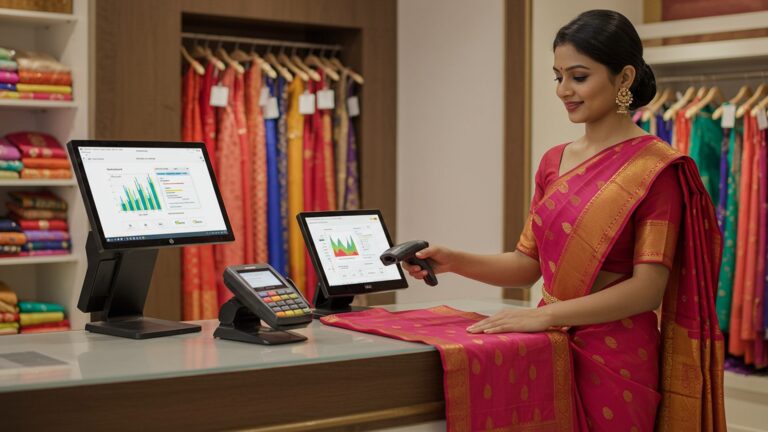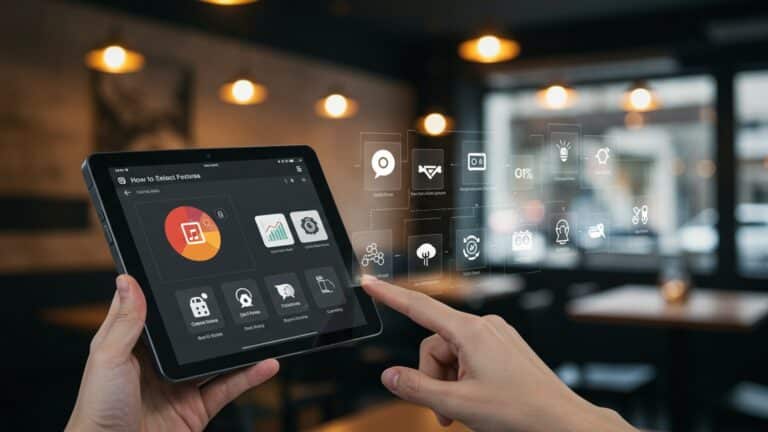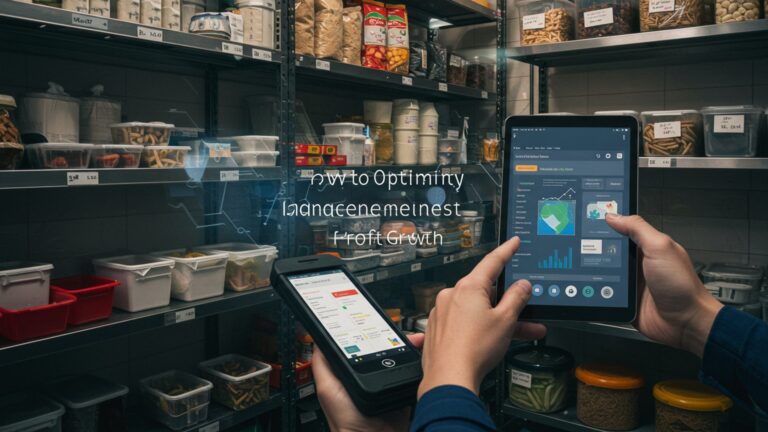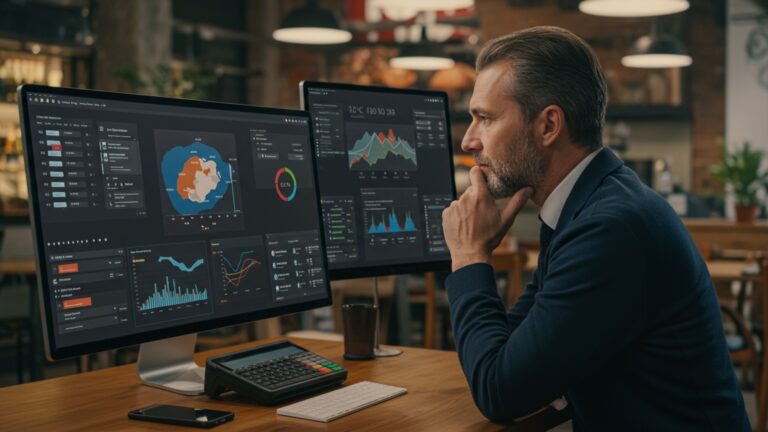7 Essential POS System Features Small Indian Restaurants Need to Thrive
Operating a small Indian restaurant today demands more than just great food; it requires sophisticated operational agility to navigate the bustling market, diverse menu complexities. the relentless pace of digital transformation. The traditional cash register simply cannot keep pace with the current demands, where seamless UPI transactions and efficient integration with delivery platforms like Swiggy and Zomato are non-negotiable. A modern restaurant POS system for small restaurants India offers a strategic advantage, moving beyond basic billing to provide real-time inventory insights, dynamic order management. invaluable customer data analytics. This technological shift empowers establishments, from a vibrant chai shop to a cozy family dhaba, to streamline operations, minimize waste. enhance customer experience, directly impacting their profitability and growth in an increasingly competitive landscape.
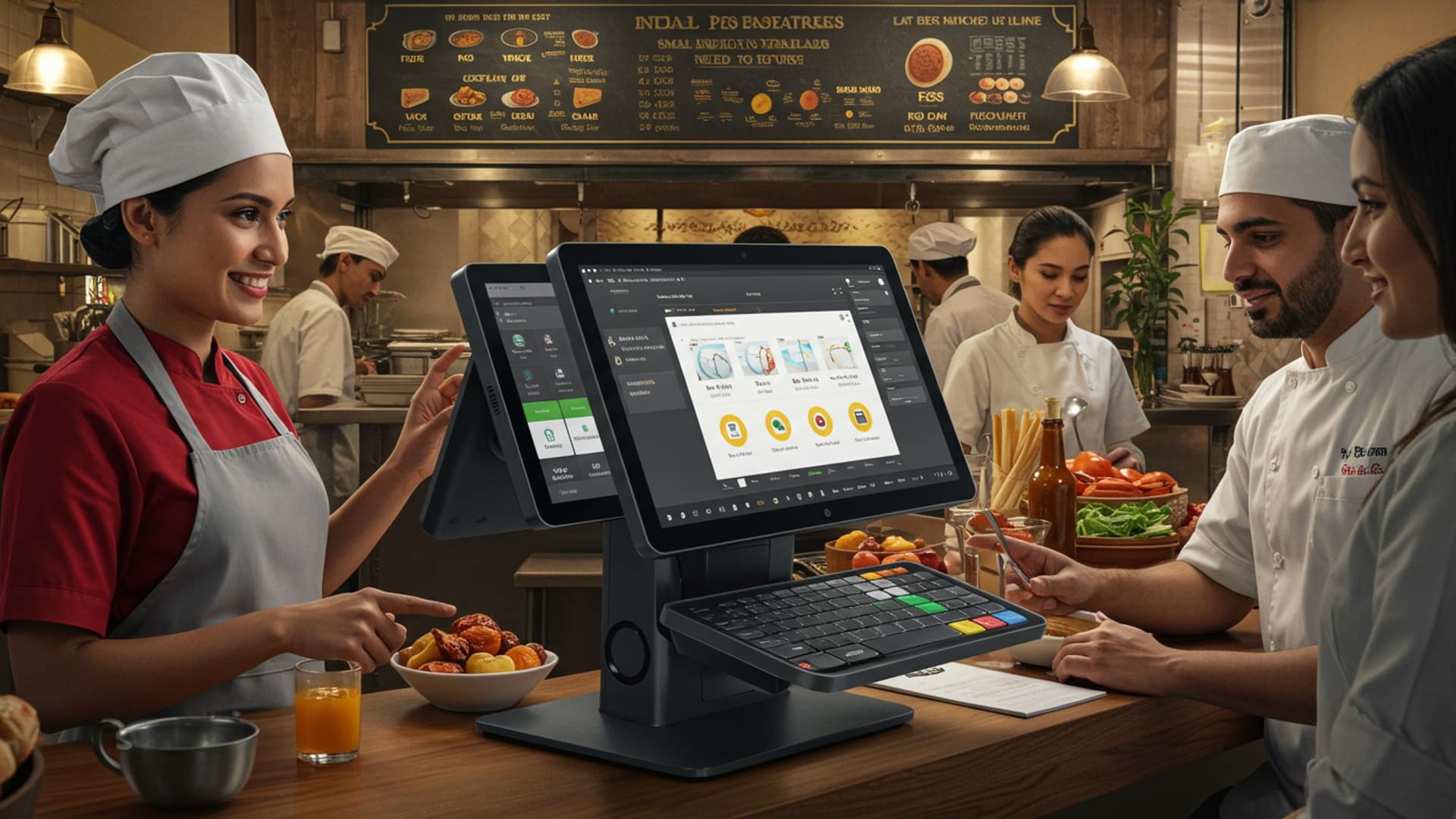
1. Intuitive Order Management and Billing
At the heart of any bustling Indian restaurant, whether it’s a cozy dhaba or a modern bistro, lies the constant flow of orders. An intuitive order management and billing system within your Restaurant POS system for small restaurants India is not just a convenience; it’s a necessity for efficiency and accuracy. This feature streamlines the process from the moment a customer places an order until the final bill is settled.
What it entails:
- Easy Menu Customization
- Table-Side Ordering (Optional)
- Split Billing and Merging Tables
- Payment Gateway Integration
Indian cuisine is known for its vast array of dishes, custom spice levels. dietary modifications. A robust POS allows for quick updates to menu items, prices. modifiers (e. g. , “extra paneer,” “less spicy,” “no onion/garlic”).
While not always a primary need for very small setups, a handheld device integration can drastically improve order accuracy and speed, especially during peak hours. Waitstaff can take orders directly at the table, sending them instantly to the kitchen display system (KDS).
Essential for group diners, allowing customers to easily split bills by item or percentage. It also enables staff to merge tables for larger parties without manual recalculations.
Seamlessly process various payment methods, including cash, cards (credit/debit), UPI. mobile wallets, which are ubiquitous in India. This reduces transaction errors and speeds up checkout.
Real-world Impact:
Consider “Spice Junction,” a small Indian restaurant in Bangalore. Before adopting a modern Restaurant POS system for small restaurants India, their manual order pads often led to miscommunications between waitstaff and the kitchen, resulting in incorrect orders and frustrated customers. Since implementing a POS with an intuitive order management system, their order accuracy has jumped by 95%. average table turnover time during lunch rush has decreased by 15 minutes. The owner, Mr. Sharma, noted, “The ability to quickly modify orders and split bills has not only made our staff’s life easier but also significantly improved our customer satisfaction scores. We get fewer complaints about wrong dishes or billing errors now.”
Actionable Takeaway:
When evaluating a POS system, insist on a live demo to test the order entry process. Can your staff, even those less tech-savvy, navigate it quickly? Look for features that minimize clicks and offer clear visual cues for menu items and modifiers. This directly translates to faster service and happier customers.
2. Robust Inventory Management
For any small Indian restaurant, managing ingredients like fresh vegetables, spices, dairy. meat is paramount. Spoilage, theft. over-ordering can significantly erode profits. A comprehensive inventory management feature within your Restaurant POS system for small restaurants India provides the necessary controls to optimize stock levels and reduce waste.
What it entails:
- Ingredient Tracking
- Recipe Management
- Supplier Management
- Waste Tracking
- Cost of Goods Sold (COGS) Calculation
Monitor the quantity of every ingredient used in your recipes. When a dish is sold, the system automatically deducts the corresponding ingredients from your inventory.
Define precise recipes for each menu item, including the exact quantities of ingredients required. This ensures consistency in taste and helps in accurate cost calculation.
Keep a database of your suppliers, track purchase orders. monitor delivery schedules. Some advanced systems can even trigger reorder alerts when stock levels fall below a predefined threshold.
Record any spoiled, dropped, or otherwise wasted ingredients. This data is crucial for identifying problem areas and improving operational procedures.
By tracking purchases and sales, the system can automatically calculate the COGS for each dish, providing a clear picture of your profit margins.
Real-world Impact:
Take “Dadi’s Kitchen,” a popular small eatery specializing in regional Indian thalis. Their biggest challenge was managing fresh produce and dairy, leading to significant spoilage. After integrating a Restaurant POS system for small restaurants India with robust inventory features, they implemented recipe costing for all their thali components. The system now alerts them when critical ingredients like paneer or specific vegetables are running low, prompting timely reorders. “We’ve reduced our food waste by over 20% in just six months,” says the owner, Mrs. Devi. “Before, we’d often run out of something crucial or have too much of another, leading to losses. Now, it’s all data-driven.”
Actionable Takeaway:
Prioritize a POS system that offers real-time inventory updates and supports detailed recipe management. This allows you to comprehend the true cost of each dish, enabling smarter pricing decisions and significantly reducing food waste – a major cost center for Indian restaurants.
3. Efficient Table Management and Reservations
Indian restaurants, particularly those with a dine-in focus, often experience peak hours that can be chaotic without proper organization. A dedicated table management and reservation feature in your Restaurant POS system for small restaurants India is crucial for maximizing seating capacity, reducing customer wait times. enhancing the overall dining experience.
What it entails:
- Visual Table Layout
- Reservation System
- Waitlist Management
- Table Status Tracking
A digital representation of your restaurant’s floor plan, showing occupied, vacant. reserved tables at a glance. Staff can quickly assign tables and manage seating flow.
Allows customers to book tables in advance, either online or over the phone. The system tracks availability, sends confirmations. can even send reminders.
For walk-in customers during busy periods, a digital waitlist helps manage expectations and notifies guests when their table is ready, often via SMS.
Monitor the status of each table (e. g. , seated, ordered, eating, requested bill, paid). This helps in understanding dining duration and improving table turnover.
Real-world Impact:
At “The Curry House,” a small but popular restaurant known for its weekend buffets, managing the rush was a nightmare. Customers would often wait for long periods, leading to frustration and lost business. Implementing a Restaurant POS system for small restaurants India with integrated table management transformed their operations. “We can now see exactly which tables are free and how long guests have been seated,” explains manager Rohan. “Our reservation system handles online bookings automatically. the waitlist feature means customers get a text when their table is ready, so they can relax outside instead of crowding the entrance. Our weekend customer flow is much smoother now.” This led to a reported 10% increase in weekend revenue due to better table utilization.
Comparison: Manual vs. POS Table Management
| Feature | Manual System (Pen & Paper) | POS Table Management |
|---|---|---|
| Reservation Booking | Error-prone, requires constant monitoring, difficult to track no-shows. | Automated, tracks availability in real-time, sends confirmations/reminders, reduces no-shows. |
| Table Assignment | Subjective, can lead to uneven server workload, hard to see overall status. | Visual floor plan, quick assignment, optimizes server sections, clear status updates. |
| Waitlist Management | Often informal, customers wait aimlessly, difficult to estimate wait times. | Digital queue, accurate wait time estimates, SMS notifications, improves customer experience. |
| Table Turnover | Hard to track actual dining duration, delays in cleaning/reserving. | Real-time status updates, identifies bottlenecks, helps optimize cleaning/reset process. |
Actionable Takeaway:
If your small restaurant relies on dine-in customers, especially during specific peak hours, a POS with robust table management and reservation capabilities is a game-changer. It not only improves operational efficiency but also significantly enhances the customer experience, encouraging repeat visits.
4. Customer Relationship Management (CRM) & Loyalty Programs
Building a loyal customer base is vital for the sustained success of any small Indian restaurant. A Restaurant POS system for small restaurants India that includes CRM and loyalty program features can help you grasp your customers better, personalize their experience. incentivize repeat business.
What it entails:
- Customer Database
- Loyalty Programs
- Targeted Marketing
- Feedback Collection
Store essential customer insights such as names, contact details, order history, dietary preferences. special occasions (e. g. , birthdays, anniversaries).
Create and manage various loyalty schemes, such as points-based systems (e. g. , “earn 1 point for every ₹100 spent”), tiered rewards, or special discounts for frequent visitors.
Use customer data to send personalized promotions, SMS updates, or email campaigns based on their past orders or preferences. For instance, offering a discount on their favorite Biryani or a special offer on their birthday.
Integrate mechanisms for collecting customer feedback directly through the POS or via digital surveys, allowing you to address concerns and improve service.
Real-world Impact:
“Naivedyam,” a small vegetarian restaurant, struggled to differentiate itself in a competitive market. After implementing a Restaurant POS system for small restaurants India with CRM features, they started a “Frequent Diner” loyalty program. Customers earned points for every purchase, redeemable for discounts or free items. The system also captured their order history. “We noticed many customers frequently ordered our South Indian breakfast items,” says manager Priya. “We started sending them an SMS on weekends with a special combo offer for breakfast. our weekend morning sales saw a 15% boost. Plus, knowing customer birthdays allows us to send them a personalized discount, which they really appreciate.” This personal touch has fostered a strong sense of community around the restaurant.
Actionable Takeaway:
Don’t just process transactions; build relationships. A POS with integrated CRM and loyalty features provides the tools to transform one-time visitors into loyal patrons. Focus on simple, easy-to-grasp loyalty programs that genuinely reward your best customers.
5. Seamless Online Ordering and Delivery Integration
In today’s digital age, online ordering and food delivery platforms are non-negotiable for many small restaurants, especially in India where these services are booming. A modern Restaurant POS system for small restaurants India must offer seamless integration with these channels to expand reach and streamline operations.
What it entails:
- Direct Online Ordering Portal
- Third-Party Aggregator Integration
- Delivery Management
- Unified Menu Management
Some POS systems offer a branded online ordering website or app for your restaurant, allowing customers to order directly without third-party commissions.
Crucially, the POS should integrate with popular food delivery platforms like Swiggy, Zomato. Uber Eats. This means orders placed on these platforms automatically flow into your POS and kitchen display system (KDS), eliminating manual re-entry.
For restaurants managing their own deliveries, the system can help assign delivery drivers, track order status. optimize routes.
Update your menu, prices. availability across all channels (dine-in, takeaway, online ordering platforms) from a single POS dashboard, preventing discrepancies.
Real-world Impact:
“Biryani Ghar,” a small restaurant famous for its Hyderabad Biryani, used to juggle multiple tablets for Swiggy, Zomato. their in-house orders. This led to missed orders, delayed deliveries. staff stress. Implementing a Restaurant POS system for small restaurants India that integrated directly with these aggregators was a game-changer. “Now, all online orders, whether from our website or Zomato, appear on one screen in the kitchen,” says owner Sameer. “Our staff no longer has to manually punch in orders from different tablets. This has reduced order errors by 90% and significantly sped up our delivery preparation, especially during peak dinner hours.” This efficiency allowed them to handle a 30% increase in online orders without hiring additional staff.
Actionable Takeaway:
If online orders and delivery are a significant part of your business, or you plan for them to be, prioritize a POS system with robust and seamless integration capabilities with major Indian food aggregators. This single feature can drastically improve operational efficiency and expand your customer reach.
6. Comprehensive Reporting and Analytics
Running a small Indian restaurant involves more than just cooking great food; it requires smart business decisions. A sophisticated Restaurant POS system for small restaurants India provides comprehensive reporting and analytics capabilities, transforming raw sales data into actionable insights that drive profitability and growth.
What it entails:
- Sales Reports
- Inventory Reports
- Staff Performance Reports
- Customer Reports
- Profit and Loss Statements
Track daily, weekly. monthly sales performance, identifying peak hours, popular dishes. slow periods. This data helps in staffing decisions and menu optimization.
Gain insights into ingredient usage, waste levels. stock discrepancies. This helps in identifying pilferage, optimizing purchasing. reducing food costs.
Monitor individual server performance, average order values. tips. This can help identify training needs or reward high-performing employees.
interpret customer preferences, popular loyalty rewards. the effectiveness of marketing campaigns.
Some advanced POS systems can even generate basic P&L statements by integrating sales data with inventory costs and other operational expenses.
Real-world Impact:
At “Taste of Punjab,” a small restaurant known for its North Indian curries, the owner, Mrs. Kaur, used to rely on guesswork for menu changes and promotions. With a Restaurant POS system for small restaurants India featuring detailed analytics, she now makes data-driven decisions. “The sales reports showed that our ‘Butter Chicken’ was a bestseller. its profit margin was lower than expected due to high ingredient costs,” she explains. “We adjusted the portion size slightly and cross-promoted it with a higher-margin bread, increasing overall profitability. We also identified that Tuesdays were our slowest days, so we started a ‘Tuesday Thali’ special, which immediately boosted foot traffic.”
Actionable Takeaway:
Don’t just use your POS for transactions; leverage its reporting features. Regularly review your sales, inventory. staff performance reports. These insights are invaluable for optimizing your menu, managing costs, improving marketing efforts. ultimately, increasing your restaurant’s profitability.
7. Multi-Store Management and Scalability
While the focus is on small restaurants, many entrepreneurs dream of expansion, or might already operate a couple of small outlets. A Restaurant POS system for small restaurants India that offers multi-store management and is inherently scalable prepares your business for future growth, making expansion significantly less complex.
What it entails:
- Centralized Data Management
- Consolidated Reporting
- Remote Access
- Scalable Architecture
Manage menus, prices, inventory. customer data for all your outlets from a single, centralized dashboard. This ensures consistency across all locations.
View sales, inventory. staff performance reports across all your restaurants, or drill down into individual store performance. This provides a holistic view of your business.
As an owner, you can access your business data and manage operations from anywhere, at any time, via a cloud-based system. This is crucial for overseeing multiple locations.
The system should be designed to easily add new terminals, users, or even entire new store locations without requiring a complete system overhaul.
Real-world Impact:
Mr. Patel started “Chai & Chat,” a small snack and tea shop. quickly found success, leading him to open a second branch in a nearby locality. Initially, he managed both stores with separate, basic POS systems, which led to inconsistencies in pricing, inventory discrepancies. fragmented sales data. Upgrading to a Restaurant POS system for small restaurants India with multi-store capabilities resolved these issues. “Now, I can update a menu item’s price across both stores instantly from my phone,” says Mr. Patel. “I get consolidated sales reports for both locations, making it easy to see which store is performing better and why. When we open our third branch next year, adding it to the system will be straightforward, not a headache.” This centralized control has saved him countless hours and ensured brand consistency.
Comparison: Single-Store vs. Multi-Store POS
| Aspect | Single-Store POS | Multi-Store POS |
|---|---|---|
| Menu Management | Updates specific to one store, manual replication for others. | Centralized updates, applies across all selected stores automatically. |
| Inventory Control | Separate inventory for each store, no cross-location visibility. | Consolidated view of inventory across all locations, facilitates inter-store transfers, bulk purchasing. |
| Reporting | Individual reports per store, requires manual aggregation for overall view. | Consolidated reports for the entire chain, comparative analysis of store performance. |
| Scalability | Requires new system setup for each new store, potential data silos. | Designed for expansion, easy to add new outlets, maintains data integrity. |
Actionable Takeaway:
Even if you currently operate a single small restaurant, consider a POS system that offers multi-store capabilities as an optional upgrade or standard feature. This future-proofs your investment and makes the eventual process of scaling your business much smoother and more efficient, reducing complexity and ensuring consistent operations.
Conclusion
Embracing the right POS system is not merely an upgrade; it’s a strategic move for any small Indian restaurant aiming for sustainable growth. Consider how robust inventory management can prevent wastage of expensive spices, or how seamless online order integration keeps pace with the Swiggy and Zomato generation. My personal tip? Start by identifying your biggest operational bottleneck, perhaps the chaotic billing during the lunch rush. then seek a system feature that directly addresses it. For instance, integrated UPI payments are now non-negotiable, reflecting current digital payment trends and simplifying transactions for your customers. Ultimately, a well-chosen POS system, much like a perfectly balanced curry, harmonizes your kitchen, billing. customer experience. It empowers you to navigate the competitive culinary landscape with confidence, ensuring your patrons leave with a smile and your business thrives, one delicious meal at a time. Don’t just serve food; serve success with smart technology.
More Articles
How to Choose The Best Restaurant Billing Software India 5 Key Steps
Top 6 Online Ordering POS Integrations for Indian Restaurants Guide
7 Smart Ways Restaurant Billing Software India Boosts Your Profits
How to Choose the Best 7 POS Systems for Your Small Indian Restaurant
Mastering Restaurant POS Software A Comprehensive Guide for Efficient Management
FAQs
What’s the big deal about order management for a small Indian place?
For a bustling Indian restaurant, a good POS handles all your orders – whether someone’s eating in, grabbing a takeaway, or getting delivery. It keeps everything organized, prevents mix-ups. makes sure customers get their Butter Chicken exactly how they ordered it, on time.
Can a POS help with my specific Indian menu items and ingredients?
Absolutely! A smart POS lets you easily add all your unique Indian dishes, modify prices. even track ingredients like your special spices or fresh paneer. This helps you manage stock better, reduce waste. know when to reorder, especially for popular items.
How does a POS make payments easier for my customers?
It makes it super smooth! A good POS supports various payment methods common in India – cash, cards, UPI (like Google Pay or PhonePe). even digital wallets. It speeds up the checkout process, makes splitting bills easy. provides accurate receipts, keeping customers happy.
Why would my small restaurant need to track customer info?
Knowing your regulars is a game-changer! A POS with CRM helps you store customer details, their favorite dishes. even their birthdays. You can then offer loyalty programs, send personalized promotions, or remember their usual order, building stronger relationships and encouraging repeat visits.
What kind of insights can I get from a POS system?
Tons of useful info! A POS can show you your best-selling dishes, peak hours, daily sales trends. even staff performance. These reports help you make smarter decisions – like what to promote, when to staff up, or which dishes might need a revamp – ultimately boosting your profits.
Can a POS help me manage my restaurant staff?
Yes, it can! Many systems allow you to manage staff shifts, track their attendance. even assign specific roles or permissions. This streamlines operations, helps with payroll. ensures everyone knows their responsibilities, leading to a smoother workflow.
I use Swiggy/Zomato. Can a POS make that easier?
Definitely! A top-notch POS can integrate directly with popular food delivery platforms like Swiggy and Zomato. This means all your online orders come straight into your system, reducing manual entry errors, speeding up order processing. simplifying management of all your delivery channels.

